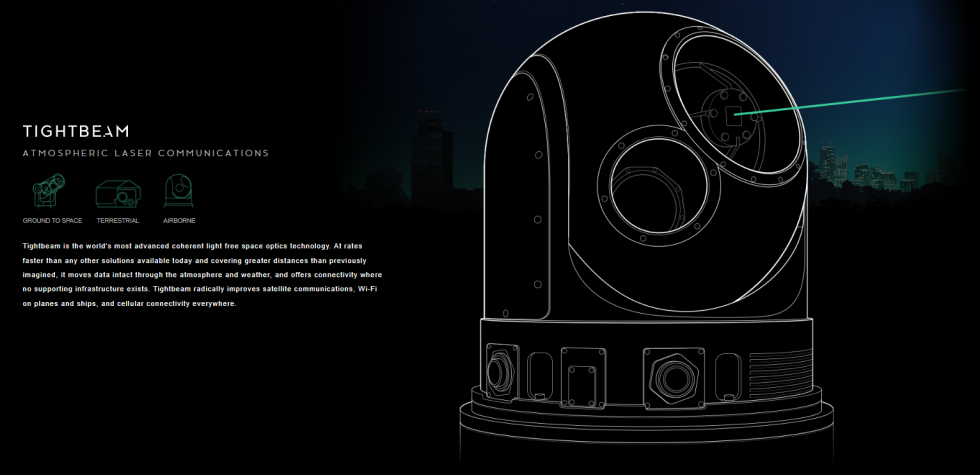Alilia
Two reports from CNBC and Bloomberg detail a new Google Connectivity spinoff called “Aalyria.” It sounds like the new company is packaging the canceled Project Loon technology under a new brand name and spinning out from Alphabet as an independent company. The company is set to go public today with a nifty new website.
Project Loon, an eight-year Google/Alphabet company, wants to bring internet to areas with poor connectivity using flying cell towers suspended overhead in weather balloons. I was. Same idea as low earth orbit satellites, but instead of satellites in space, these balloons were only 20 km in the air. Loon’s balloons not only have to constantly navigate through various atmospheric airways, they also have to be continuously retrieved and relaunched to maintain a steady stream of balloons overhead. In addition to being a reference to a large weather balloon, the name “Loon” was chosen to demonstrate how impractical the idea sounds. Ultimately, that feasibility turned out to be just a financial issue, and Google said he will close Loon in 2021, not a “long-term, sustainable business.” rice field.
A CNBC report paints the spinoff as another result of Google CEO Sundar Pichai’s cost-cutting plans at Google. Pichai said in August that “productivity as a whole has not reached the required level” and that the company will “consolidate overlapping investments and streamline processes.” CNBC said the push to cut costs means Google is looking to “advance or scale back experimental projects.” Some Alphabet companies, like Waymo, raise outside funding to keep their operations running.

Alilia
Aalyria’s two big technologies are ‘Tight Beam’ and ‘Space-Time’. Tightbeam, which appears to have emerged from Project Loon research, uses lasers to communicate with satellites. Project Loon used lasers for intra-balloon communications, but now Aalyria “covers greater distances than previously imagined, at speeds faster than any other solution currently available” in space, It promises to transmit data to ground and air targets. SpaceX, perhaps his biggest competitor to Aalyria, is already using lasers for inter-satellite communications when it comes to bringing internet to less-connected spaces.
Spacetime is a “software platform for coordinating networks of land, sea, air and space”. According to Aalyria’s site, the software is for “organizing a network of ground stations, aircraft, satellites, ships, and urban he meshes.” Spacetime “optimizes antenna link scheduling, network traffic routing, and spectrum resources to continuously evolve and respond to changing network requirements in real time,” and “combines with legacy, hybrid space, 5G NTN, and FutureG network architectures. It was designed with interoperability in mind.”
Loon had to manage a loosely coupled network of constantly moving (and crashing) balloons, and building Internet service on top of that shaky infrastructure probably required robust routing software. Bloomberg said: “The key technology behind Spacetime is an algorithm that predicts, for example, when a plane is about to lose contact with a particular satellite or ground station, and directs new signals at the plane on a beat.”
CNBC reports that Alphabet has a minority stake in the new startup, and Alphabet has transferred “nearly a decade of intellectual property, patents and physical assets, including office space, to Aalyria.” Aalyria has to survive on non-Alphabet funding, and has also raised from the founders of Accel, J2 Ventures, and Housatonic.
Aalyria’s “Who we work with” is a big lineup for the US defense sector.
Alilia
The startup now appears to be focused on the U.S. military, including an $8.7 million “commercial deal” with the U.S. Defense Innovation Unit. Aalyria’s “contractor” section of his website shows the logos of the United States Space Force, the Space Combat Analysis Center, the United States Air Force, and the United States Special Operations Command. The company’s advisory board includes former Deputy Secretary of Defense Robert O. Work and former U.S. Space Force Chief Innovation and Technology Officer Kim Crider.
The U.S. Defense Innovation Unit issued a press release about the Aalyria contract in July, saying, “A fully networked battlespace has been a commander’s dream for decades, but is finally within reach. I was there,” he said. For now, the initial goals are “on-demand or near-real-time satellite imagery,” “tracking combat across theaters,” and “reliable broadband his internet in remote forward operating bases.”

